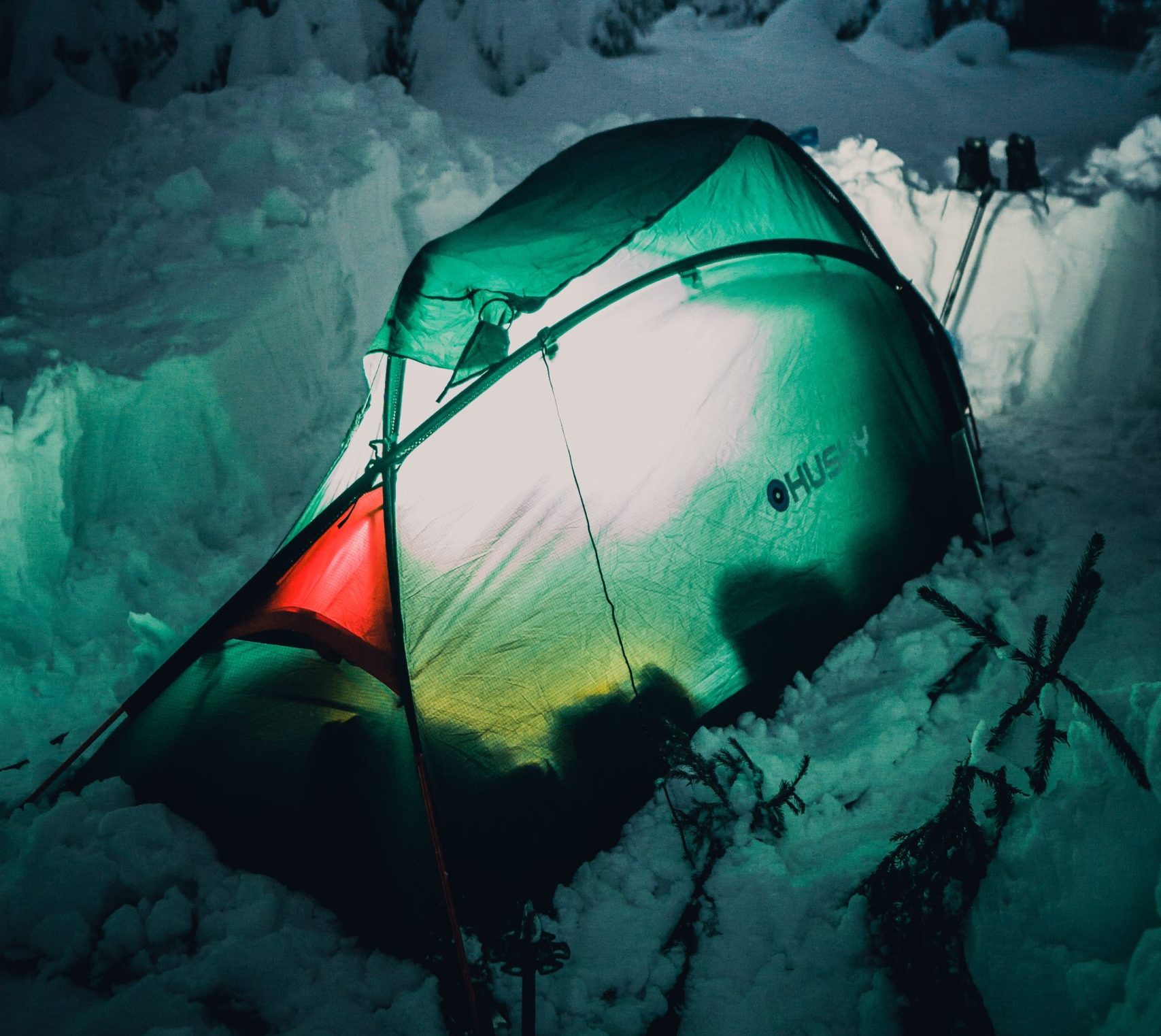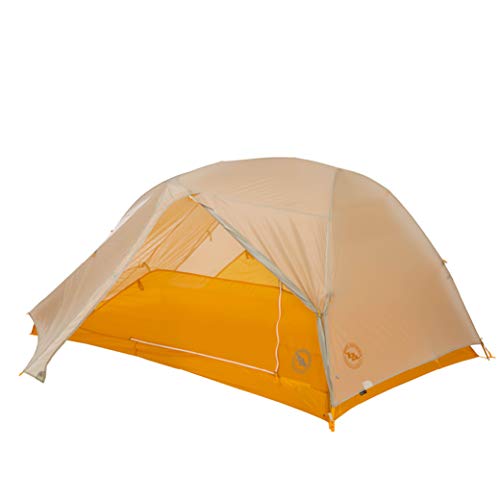Do you often find yourself hiking or camping in the backwoods solo? Are you looking for a lightweight shelter to protect you from the elements while you’re out on multi-day adventures? This article is going to help you decide which tent or bivy is right for you.
While the most common shelter to use in the backwoods is definitely a tent, there are many reasons why someone would choose to use a bivy instead.
Things to Consider
Weight
If you’re looking to cut as much weight out of your pack as possible, a bivy may be the best option for you. This is because you will be able to find extremely light tarp-like bivy sacks that only weight a little over a pound. Depending on how much each ounce matters to you, companies are now also making extremely lightweight tents.
Comfort
This is a big thing to consider when deciding between a bivy and a tent. You’ll want to think about how much space you think you will need to stay comfortable. If you’re the type of person that gets claustrophobic then a bivy is not for you. While some bivy sacks come with poles so you have a little more headroom, others do not.
Durability
When picking out your bivy or tent, you’ll want to consider what material it is made out of and how long it will last. Many of these tents and bivy are made using lightweight fabric, which is great for keeping your pack light. Unfortunately, some of these fabrics are prone to ripping.
What is a Bivy?
A bivy is basically a sleeping bag that goes all the way over your head. The main drawback of a bivy compared to a tent is that it doesn’t give you as much space to move around. The benefit is that they can be laid out in smaller spaces. That’s why bivy sacks are great if you’re a climber looking to climb a route that requires more than one day or if you’re going to be camping in hiking in areas where you won’t have a lot of room to spread out.
Some of the more spacious bivy sacks come with poles so that you can have a bigger opening for your head. These bivy sacks are more like a very small tent. Naturally, if you’re looking for a bivy that comes with pegs to create more room, you’re going to be looking at heavier sacks. Overall, lightweight designs don’t have poles and will, therefore, have less headroom.
Pros
- Only has room for 1 person
- Minimal and simplistic
- Great for rock climbers looking to try routes that take more than one day
- Lightweight and packs down small
Cons
- Claustrophobic
- Isn’t ideal for more intense weather
The Best Bivy Sacks on the Market
Snugpak Stratosphere
This 1 person bivy sack is 91 inches long, 32 inches wide and 20 inches tall. The height on this bivy comes from the poles that you can set up to make your bivy more comfortable. This is great because it allows you to have more headroom in your bivy. This bivy sack is also great because it is only 39 ounces. The material is 100% waterproof and windproof so it will protect you when it rains. It is also great for when you are hiking in both cold and windy climates. It’s important to note that this four-season bivy also has a mosquito net that may come in handy on warmer nights and is great for added ventilation.
Pros
- Comes with poles to allow for more headspace
- 100% waterproof
- Added mosquito net
Cons
- Not the lightest option
- Very strong fabric so it does not breath as well in warmer climates
Sierra Designs Backcountry Bivy
While this bivy does not have stakes for added headroom, this lightweight option is great for the hiker looking to cut out as much weight from their pack as possible. Although small, it is designed to fit a sleeping bag and sleeping pad so you can get as comfortable as you need to. Just like the option above, this bivy sack has a mesh panel for ventilation and serves as a mosquito shield when the weather is warmer. It is made out of nylon material that is both waterproof and breathable.
Pros
- Extremely lightweight
- Mesh window to increase airflow in hotter climates
Cons
- No poles for added headroom
Outdoor Research Interstellar Bivy
This bivy sack is a little bit more expensive than the other options. This is because it comes with poles and still only weighs twenty one ounces. So, if you’re looking to cut weight from your pack without sacrificing comfort, this might be the option for you. While it is great for those of you looking to hike all year long, the footbed at the bottom does get smaller so it’s a little more difficult to fit a sleeping bag inside.
Pros
- Lightweight
- Comes with poles for added headroom
Cons
- Expensive
- Not as much room as other options
What is a tent?
The tent is the most common shelter for hikers and campers. Usually, they are heavier than a bivy but have more room for you to move around in. If you’re looking for extra room on your solo hike, some people choose to get a 2-person tent. Or, if you and your hiking buddy want to share the shelter, a tent may be a better way to shed some shared weight in your packs.
Pros
- Has enough room for two or more people
- Allows campers to move around
Cons
- Heavier than the average one-person bivy
- Bigger than the average one-person bivy, even when rolled up
The Best *Lightweight* Tents
There are a lot of tents on the market that are great for different outdoor occasions. But, in order to continue the comparison of bivy vs. tent, we decided to compare lightweight tent options.
Nemo Hornet Elite 2-Person Tent
This 2-person tent only weighs 1 pound and eleven ounces. It comes with a rainfly that blocks the rain while also keeping airflow throughout the tent. The tent has two doors so that each person can comfortably enter from each side. On warm nights, you can also set up the tent without the cutaway rainfly so you can stargaze while simultaneously keeping the mosquitos out. This tent is also equipped with light pockets to hold your headlamp or lantern.
Pros
- Extremely lightweight
- Comes with a waterproof fly
- Enough room for 2 people
Cons
- Large for 1 person
Big Agnes Tiger Wall UL
This 3-season tent is another great, lightweight option that fits up to 2 people. The simple design comes with a single-pole to make it easy to set up while also saving some weight in your pack. While it is larger than the option above, it only weighs 2 pounds 3 ounces. Similarly, this tent comes with a rainfly to protect you against the elements during rainy nights and mesh to allow air into the tent on warmer nights. This tent also comes with 2 interior mesh pockets to keep your personal items close.
Pros
- Spacious
- Raised tent floor to keep out dirt
- Comes with separate rainfly
Cons
- Zipper tends to get jammed easy
- Not as lightweight as the other tents
MSR Carbon Reflex One Person Tent
The last tent on our list is for 1 person, this is great if you’re looking for a little bit more room to move around but aren’t traveling with a close companion or don’t feel like you need a ton of extra space. This tent comes in at 1 pound 7 ounces and packs down extremely small so you can pack it in your pack easily. The tent floor is 17.5 square feet so you will have plenty of room to move around in your sleep. A great feature of this product is the rainfly that comes with this tent has an extremely waterproof coating on it. Another thing we love about this tent is that it comes with a 3-year limited warranty.
Pros
- Extremely lightweight
- Waterproof
- 3-year limited time warranty
Cons
- Small surface area
Overview
Overall, it depends on where you’re hiking and how much space you have to set up your camping area.
If you’re going to be in rain or other hardcore conditions then you’ll probably want to use a tent. But, if you’re going to be climbing a multi-day route or know that you won’t have a ton of space to set up your campsite, you should definitely go with a bivy.
The two big things to consider before making your purchase is how much the product weighs and how much space you’ll have when sleeping in the product.







